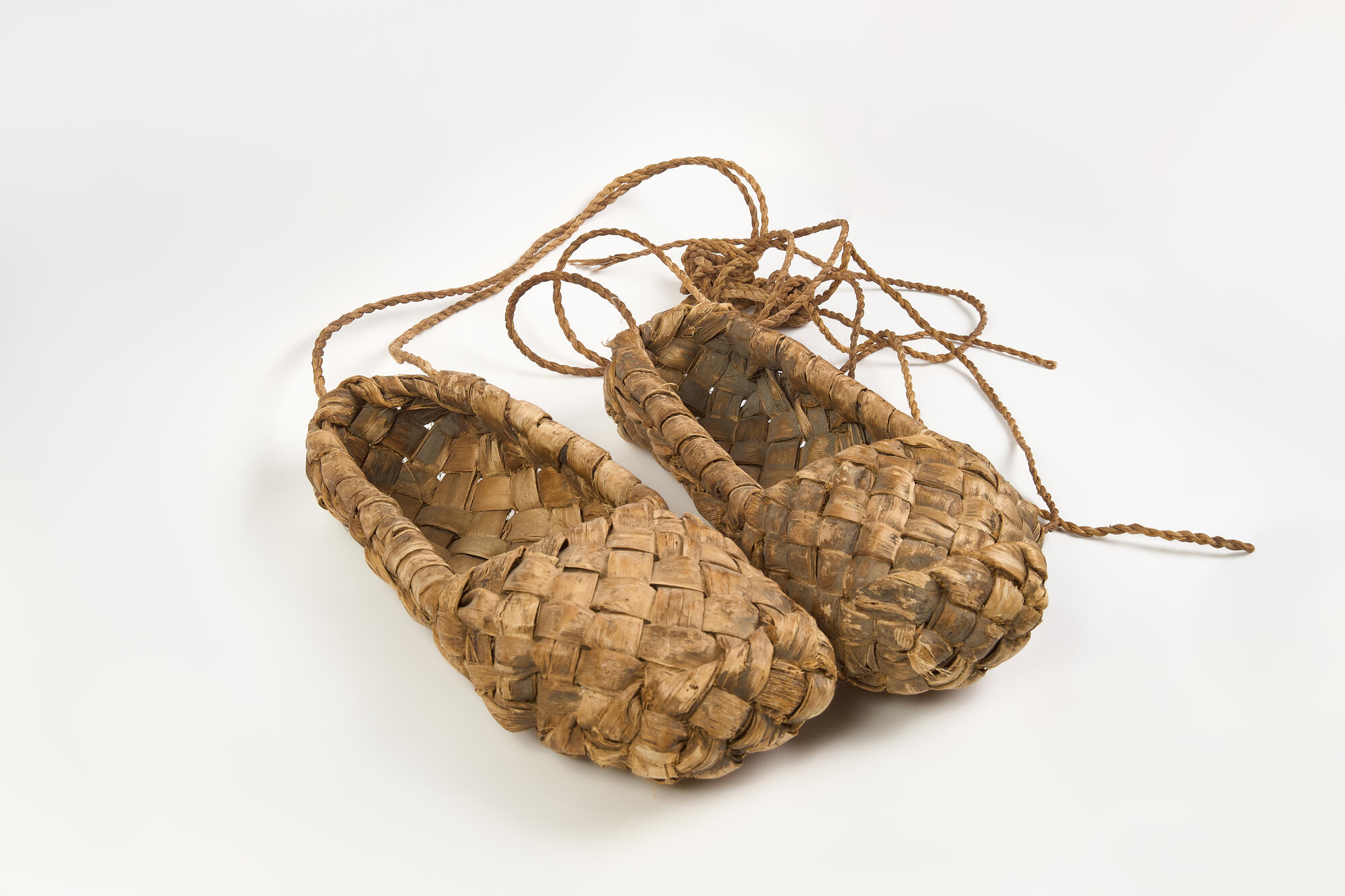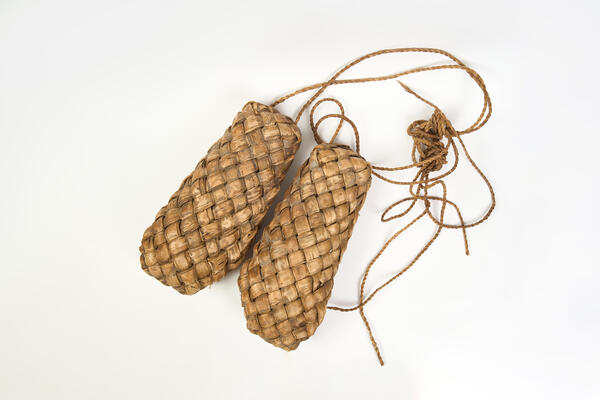Lapti are woven shoes that were widespread in Russia. They were made from plant material. It is believed that woven footwear is one of the oldest types of footwear, which was widespread in many countries of the world.
For example, in Japan, the so-called waraji, traditional sandals, were made of rice straw. Peasants in Spain wove espadrilles — sandals made of esparto grass, after which this type of footwear was named. Polynesians used coconut fibers to make shoes: they could walk on the seabed in them and not hurt their feet on coral.
In Russia and Eastern Europe, lapti were woven from linden, elm or willow bast, as well as from birch bark or hemp. Less widespread were such types as korenniki, which were made of thin roots, and volosyanniki — horsehair shoes.
To make traditional lapti, narrow strips of bast from linden or other deciduous trees were used. The tools required were a wooden block for shaping, a knife for trimming and a special iron hook — “kochedyk”, which was a flat curved awl with a wooden handle. Lapti were woven using the same shoe block, so there was no difference between the left and the right shoe in a pair.
Peasants wore lapti both as everyday and festive footwear: they wore them while working in the forest, in the field, in the vegetable garden, as well as when they went to the fair or to church. Each man would wear down up to 60 pairs of such shoes per year. For this reason, bast was stocked in advance, in the spring, in sufficient quantity to last the whole family for a year.
“The carefully stripped bast was then tied into bundles by hundreds and stored in the mud room or in the attic. Prior to weaving lapti, bast was soaked in warm water for a day. Then the bark was scraped off, leaving the fiber. From a wagon of bast — from 40 to 60 bundles of 50 tubes in each — approximately 300 pairs of shoes could be made. Different sources give various accounts of how fast a pair of lapti could be woven: from two to ten pairs a day”, from the article by the historian Dmitry Olegovich Osipov, “The History of the Lapti in Russia”, magazine “Science and Life”, No. 2, 2007.
The methods of weaving lapti differed from region
to region. In Belarus, Ukraine, and the neighboring regions of Russia, a more
conservative weaving technique was used — the so-called “straight lattice”
technique. Lapti there were woven from the toe to the back. Great Russian lapti
were characterized by a more modern oblique weave, and work on them was started
from the back.




